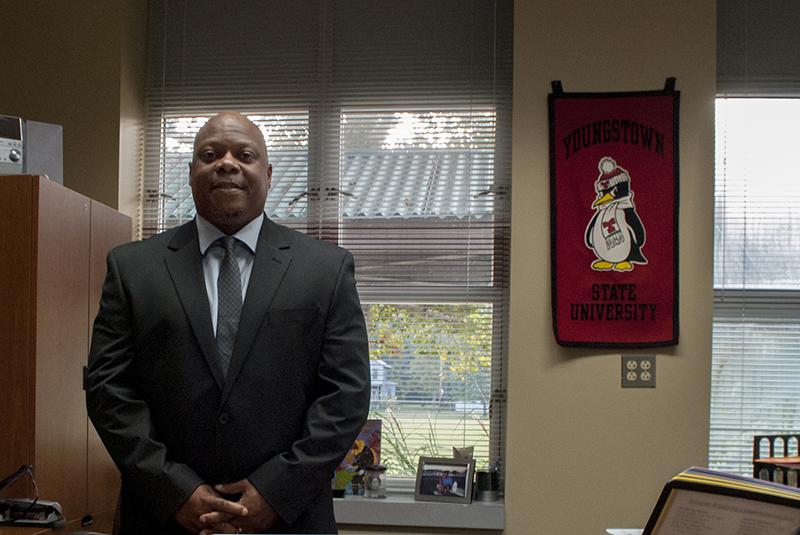School Board Delays Bond by Another Year
The new Oberlin Schools Superintendent David Hall stands in his office. The district has delayed plans to issue a bond in November to finance new school construction.
September 4, 2015
Oberlin City Schools delayed passing the bond necessary to build a new school that would move the city toward having a K–12 campus.
In order to start construction, voters would have to approve a bond to raise enough funds to finance the project. The bond vote was originally scheduled for this May. However, according to School Board President Ken Stanley, Superintendent John Schroth’s illness and death earlier this year severely delayed the district’s future plans, causing the district to move the bond issue to November.
The Board then decided to pull the bond issue from November’s ballet this week, delaying it by another year.
“This past year has been a tough one for the district,” Stanley said. “We brought in an interim superintendent who did a terrific job, and was also the principal at Prospect [Elementary School]. Keeping the district running was more important than the bond issue. Then, what is going to sound like a series of excuses is just a series of realities. Then, we went into the process of hiring a new superintendent.”
Originally, Oberlin Schools wanted to rehire the interim superintendent, but he declined. After going through roughly 50 applications from across the country, the Board decided Dr. David Hall was the right choice.
“My family and I are very proud and excited to become members of the Oberlin community,” Hall said in a statement on the district website. “I come to Oberlin City Schools with 22 years of educational experience, which ranges from being a classroom teacher in the Kalamazoo Public School system to an assistant superintendent for Lorain City Schools.”
This week marks his completion of one month in office. The Board pushed the vote back another year to allow Dr. Hall to focus on the day-to-day tasks of his new job and allow taxpayers to have a full discussion about the future of the district.
As of now, the four Oberlin schools were built for a capacity of 2,000 students, but currently have just over 1,000.
“We have too much space, we have too many rooms, but they are not as large as what the state mandates today,” Stanley said. “Children like to graduate from one school to the next, and parents like that children go to school in the neighborhood, but maintaining four school buildings is expensive and there are a lot of costs involved, such as having four principals and more administrative staff. Fewer buildings would be more efficient.”
Within the next 20 years, Oberlin City Schools plans to have a K–12 campus. The school would be located near the current Oberlin High School football stadium.
The district hopes to breach its goal by building a pre–K through fifth grade school building, which would be partially funded by the College.
Once a 7–12 building is constructed, the original building would turn into a K–6 school. The second building would come to fruition once state funding is received. One of the main motivations for the new school buildings is to increase efficiency in areas such as bussing and administration.
“We currently have music teachers, art teachers and language teachers that travel from building to building and spend a lot of their time just packing their supplies and moving it,” Stanley said. “The teachers don’t get to talk to other teachers in other buildings much at all, so it will simply be more efficient to have a K–12 campus.”
As of right now, the new school would replace Eastwood and Prospect Elementary School. Eastwood would be repurposed and maintained by the school district. Prospect would either be sold for an appropriate use or get torn down. The building of the new school will raise taxes minimally, but the Board maintains they are looking into finding ways to localize labor and help the local economy.
















